March 2014
Cosmic Apprentice
17/03/14 15:16
Dorion Sagan: Cosmic Apprentice: Dispatches from the Edges of Science (Minneapolis: University of Minnesota Press, 2013)
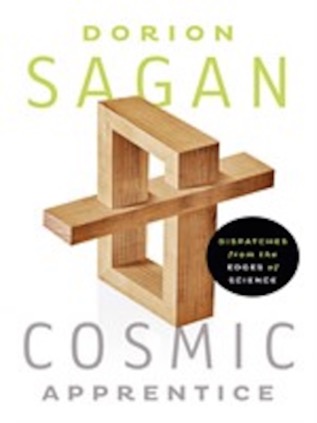
Frankly, I don’t find the sense of “edges of science” to be about the cutting edge or the areas of newest discovery. What makes these writings “dispatches form the edges of science” is that it is much more about pseudo-science than science itself.
Dorion Sagan is well read in both science and philosophy and he is good at dropping quotes, but the field of the philosophy of science seems to be somewhat missed in his writing. Perhaps this book could be generally labeled philosophy of science, but I couldn’t avoid the sense that Sagan was playing around with ideas rather than making commitments to positions and ideas.
The book is a good read, but I suspect not a significant contribution to the literature of either science or philosophy. I’m not sure what I was expecting, but the book ended up disappointing me. I suggest that we stick with the father and don’t pay too much heed to the son in this case.
Let the Best Boat Win
15/03/14 19:17
Constance Buel Burnett, Let the Bet Boat Win: The Story of America’s greatest yacht designer Nathaniel Greene Herreshoff (Boston: Houghton Mifflin, 1957)
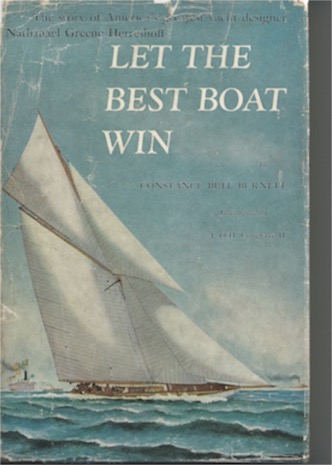
You don’t have to be an ultra-wealthy yacht owner or even a fan of the America’s Cup race to enjoy the story of the remarkable Herreshoff family. It is a story of genius, to be sure, but it is also a story of the love of parents and their refusal to give up on their children in the face of disability. The Herreshoff family raised four children who were blind to become more than just productive members of society. Each was, in his or her own way a leader. It is a story of great courage and triumph over the odds.
Nathaniel Herreschoff was not one of the blind children, but his partnership with his blind broth John was key to his achieving such fame in the design of both power boats and racing sailboats. The Herreshoff yards produced some of the finest ships of any type ever produced in the United States and set the stage for the remarkable run of victories that have resulted in the America’s Cup remaining in this country for so many of the years of its history.
If you love boats, if you are interested in the triumphs of people living with disabilities, or if you just love a good story. This book is a fun read. The book be dates, but the story is timeless.
Pastrix
15/03/14 18:56
Nadia Bolz-Weber, Pastrix: the Cranky, Beautiful Faith of a Sinner & Saint (New York: Jericho Books, 2013)
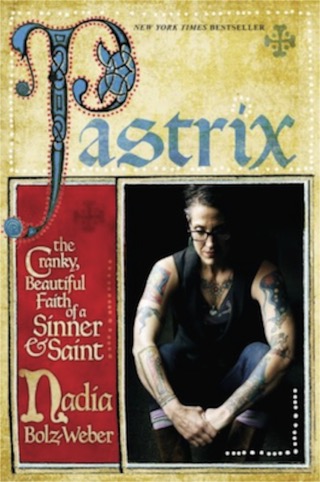
She is also, quite simply, a good writer and effective storyteller. This book is an easy read, but it is not devoid of depth and plenty of opportunity to question traditional understandings and approaches to congregational life. Bolz-Webber has become a spokesperson for the emerging church movement in many ways and multiple arenas. Her interview with Krista Tippett at the Wild Goose Festival made for great radio and her book makes for good reading.
I’m going to keep this one on the shelves for a while. It merits a second reading.
Last Keeper at Split Rock
15/03/14 18:31
Mike Roberts, The Last keeper at Split Rock: A Memoir (St. Cloud, MN: North Star Press, 2010)
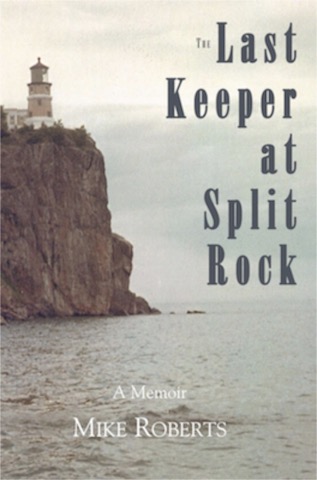
Mike Roberts didn’t life at Split Rock for decades. He served honorably there for a couple of years. It was just the chance of timing that meant that he was there when the lighthouse was decommissioned and like so many others became a part of the past as modern navigation and collision avoidance systems replaced traditional lighthouses. He has preserved the story with a series of vignettes of activities and incidents that were a part of his time of service at the lighthouse.
The book reads easily and is a treat for those who have found beauty and meaning in the vastness of Lake Superior, the beauty of the north shore, and the adventure of the ships and sailors who travel the waters.
At Home on the Range
15/03/14 16:02
Margaret Yardley Potter, At Home on the Range, presented by Elizabeth Gilbert (San Francisco: McSweeney’s, 2012)

Here is what happened. I ended up purchasing a copy of this cookbook by the great-grandmother of Elizabeth Gilbert because I bought a package of books from McSweeney’s, one of my favorite publishing houses. They offered a deal that was just too good to pass up. The rest of the books were gems, so what did I have to risk by opening this book.
The book is far more than recipes. It is a kind of book of advice on how to live and entertain in polite society. And it is so well written that I just kept reading even though I doubt that I will every try any of the recipes in the book. It was a glimpse on a way of life that is now past, but still has its own charm and attraction.
If Elizabeth Gilbert inherited a bit of her great-grandmother’s storytelling skill, Eat, Pray, Love might be worth reading some day.
The Moth
15/03/14 14:49
Cahterine Burns, ed, with preface by Adam Goppnik and foreword by George Dawes Green, The Moth: 50 True Stories (New York: Hyperion Books, 2013)
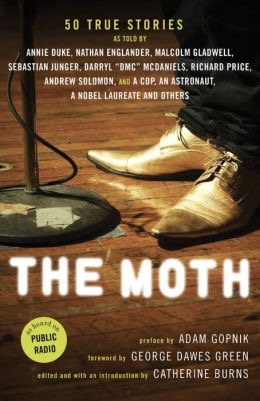
I think it is safe to say that there are things to be learned of the art of storytelling from reading stories as well as from listening to them. Of course, the book doesn’t have the unique voice of each storyteller. I tend to read in my own voices. However, the stories are so unique that each has its own voice.
Some of the stories are well worth having a written record. These, of course, are not my stories. Nor are they ones that I can tell. However, reading them adds to the experience of hearing them.and they become unique teachers of the craft of storytelling.
I would definitely recommend this book to a reader who doesn’t navigate the podcasts. I don’t need to recommend it to fans of The Moth. Chances are they have already read it.
The Anarchists' Convention
05/03/14 15:07
John Sayles: The Anarchists’ Convention and Other Stories (New York: Avalon/Nation Books, 1979)
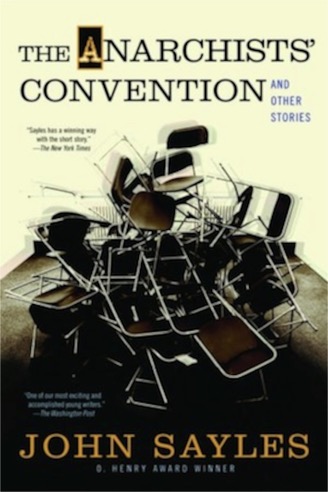
Having read his novel, I didn’t realize what a wonderful and delightful sense of humor he has. This book had me laughing and engaged from story to story. It is, simply, delightful.
Sayles is not only capable of the big stories. He’s also got a lot of smaller stories to tell. And they are worth reading!
Resilience
05/03/14 15:02
Andrew olli and Ann Marie Healy: Resilience: Why Things Bounce Back (New York: Simon & Schuster, 2012)

Zolli and Healey take a systems approach, often ranging wide in their discussions and occasionally venturing into topics about which they have less expertise than others. The book, however, is a fairly thorough exploration of the concept and gives a good introduction to the concept of resilience. Some of the situations report in the book bear further reading and exploration. The book, however, does provide an excellent starting place to think about the topic.
The range of systems explored is remarkably wide. Everything from coral reefs of Palau to the back streets of Palestine is discussed. The book is filled not only with reports, but also with opinions, some well founded, others that are a bit harder to follow.
With extensive footnotes and a large bibliography, the book purports to be a scholarly study. I’m not sure that i am as impressed with the academic quality of the book. The authors didn’t focus sufficiently for my tastes. I would have preferred that they examine in depth rather than cover the broad range of the topic. However, the book opens the door to more reading and offers a fairly comprehensive study of the literature on the topic. I’ll keep it as a reference for further reading in the future.